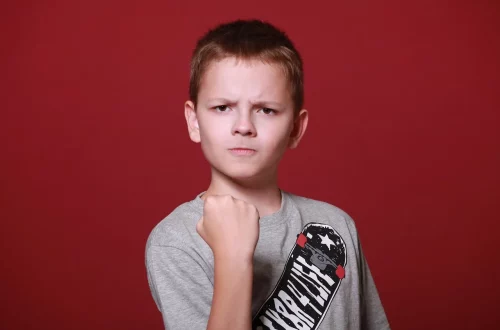
The Ultimate Guide to Lice Spray for Hair: Safe and Effective Solutions
Lice infestations can be a distressing experience for both children and adults alike. These tiny parasites, which thrive on the human scalp, can cause intense itching and discomfort, not to mention the social stigma that often accompanies them. In recent years, the demand for effective lice treatments has surged, leading to an array of products on the market, including lice sprays. The effectiveness of these sprays can vary significantly, making it essential to understand what to look for in a quality product.
Parents and individuals dealing with lice need reliable solutions that not only eradicate the insects but also ensure safety for the user. With numerous options available, it is vital to discern which products harness the right ingredients and methods to combat lice effectively without posing health risks. As lice become increasingly resistant to certain treatments, ongoing research and innovation in lice removal products are crucial. This guide aims to explore the various aspects of lice spray treatments, shedding light on their effectiveness, safety measures, and how to choose the right product for your needs.
Understanding Lice and Their Lifecycle
To effectively combat lice, it is crucial to understand what they are and how they reproduce. Lice are small, wingless insects that feed on human blood. There are three primary types of lice that affect humans: head lice, body lice, and pubic lice. Head lice are the most common, especially among school-aged children. These pests are about the size of a sesame seed and are typically grayish-white in color.
The lifecycle of a louse consists of three stages: the egg (or nit), the nymph, and the adult. Nits are laid by adult female lice and are often found close to the scalp, attached to hair shafts. They are difficult to spot due to their small size and the way they blend in with hair color. After about a week, nits hatch into nymphs, which mature into adult lice within seven to ten days. Adult lice can live for about 30 days on a human host, during which they can lay numerous nits, leading to a rapid increase in lice population.
Understanding this lifecycle is vital for effective treatment. Simply applying a lice spray may not suffice if the underlying problem is not addressed. Nits must be removed, and the entire lifecycle must be disrupted to prevent re-infestation. Therefore, a comprehensive approach that combines lice sprays with thorough combing and cleaning is often the most effective strategy.
Choosing the Right Lice Spray
When selecting a lice spray, it is essential to consider several factors to ensure efficacy and safety. First and foremost, look for products that are clinically tested and proven to kill lice and their eggs. Ingredients matter; some sprays utilize natural oils, such as tea tree oil or neem oil, which are known for their insecticidal properties. Others may contain chemical agents like permethrin or pyrethrins, which have been effective in treating lice for many years.
Safety is another critical consideration, particularly for children. Many lice sprays are designed for use on hair and are safe for children, but it is essential to read the label carefully. Look for products that are free from harsh chemicals, parabens, and sulfates, as these can irritate the scalp and skin. Additionally, some sprays are designed to be non-toxic and can be used in conjunction with other lice treatment methods.
Another factor to consider is ease of application. Some lice sprays require multiple applications or a specific set of instructions for optimal results. Ensure the product you choose fits seamlessly into your routine and can be easily applied without causing additional stress. Finally, consider the scent and formulation of the spray. A pleasant fragrance and non-greasy formula can make the treatment experience more tolerable, especially for children.
Effective Application Techniques for Lice Spray
Applying lice spray correctly is vital for its effectiveness. To maximize the results, follow these steps:
1. **Preparation**: Before applying the spray, ensure that the hair is clean and dry. Wash the hair with a mild shampoo and avoid using conditioner, as it can create a barrier that may hinder the spray’s effectiveness.
2. **Sectioning the Hair**: Divide the hair into sections, using clips to keep them separated. This technique allows for thorough application, ensuring that every strand is treated adequately.
3. **Spraying**: Hold the lice spray approximately six inches away from the scalp and apply it evenly across the entire head, focusing on the roots and areas behind the ears and at the nape of the neck, as these are common hiding spots for lice.
4. **Combing**: After applying the spray, use a fine-toothed lice comb to remove dead lice and nits. Comb through each section meticulously, wiping the comb on a paper towel between strokes to remove any lice or nits trapped in the teeth of the comb.
5. **Follow-Up Care**: After the initial treatment, it is essential to check the hair daily for any signs of remaining lice or nits. Some products may recommend a second application after a week to ensure that any newly hatched nymphs are also eliminated.
By following these application techniques, you can enhance the efficacy of lice sprays and reduce the likelihood of re-infestation.
Preventing Future Lice Infestations
Once you’ve successfully treated a lice infestation, the next step is to take preventive measures to avoid future outbreaks. Here are several strategies to keep lice at bay:
1. **Educating Your Family**: Teach children about lice and how they spread. Encourage them to avoid head-to-head contact during play and to refrain from sharing personal items like hats, hairbrushes, and towels.
2. **Regular Checks**: Conduct regular checks for lice, particularly after your child returns from school or after a sleepover. Early detection can prevent a minor issue from turning into a full-blown infestation.
3. **Creating a Lice-Free Environment**: Regularly wash bedding, hats, and clothing in hot water. Vacuum carpets and upholstered furniture to remove any stray lice or nits. Items that cannot be washed can be sealed in a plastic bag for two weeks to kill any lice.
4. **Using Preventive Products**: Consider using preventative lice sprays or shampoos that contain natural ingredients known to repel lice. These products can be used routinely to create a barrier against potential infestations.
5. **Monitoring Play Areas**: Be mindful of where your children spend time. Lice can easily spread in crowded areas, such as schools and camps, so awareness and communication with other parents can help in monitoring outbreaks.
By implementing these preventive measures, you can effectively reduce the risk of future lice infestations and maintain a lice-free environment for your family.
**Disclaimer**: This article is for informational purposes only and does not constitute medical advice. For any health-related concerns or conditions, it is essential to consult a healthcare professional.




